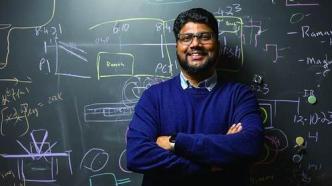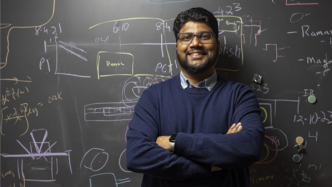
Ranga Dias, an academic star in the field of room temperature superconductivity, has "collapsed" again. His doctoral thesis was recently exposed by the "Science" website that there was a lot of plagiarism, involving up to 21% of the content.
In March of this year, the team of physicist Ranga Dias of the University of Rochester in the United States announced that a lutetium nitrogen-hydrogen material they developed had achieved room temperature superconductivity at nearly 10,000 atmospheres (1 GPa). However, many physicists are cautious about this statement, because the Dias team had been withdrawn by Nature six months ago on suspicion of data tampering, a paper on room temperature superconductivity.
More recently, Dias has been accused of serious plagiarism from his doctoral dissertation at Washington State University in the United States in 2013. Several media outlets have previously reported that many passages in Dias' thesis are identical to a 2007 doctoral thesis written by James Hamlin at Washington University in St. Louis.
Now, the victim has come forward. James Hamlin is currently an associate professor in the Department of Physics, University of Florida. He and Simon Kimber, a physicist at the University of Franche-Comté in France, checked Dias' doctoral dissertation for himself and found that at least 6,300 words were the same as paragraphs in 17 other papers, covering as much as 21% of the paper.
The process of Kimber's involvement in this matter is quite dramatic. He and Dias are co-authors on a paper to be published in Physical Review Letters in 2021. Hamlin points out that a diagram in the paper is almost identical to one in Dias' doctoral dissertation.
This aroused Kimber's vigilance. He decided to investigate it himself. Kimber and Hamlin checked Dias' doctoral dissertation word for word, placing the different sentences in a scholarly search tool. They found that Dias' doctoral dissertation shared similarities with multiple other papers. Part of it came from a 1999 paper by Dias's thesis advisor, materials scientist Choong-Shik Yoo of Washington State University. Yoo said that he did find the apparent duplication when reviewing Dias' paper, but he thinks it's a minor error and not a major problem.
But WSU emphasizes in its Academic Integrity Policy that there is no distinction between intentional and unintentional plagiarism. In other words, whether intentional or not, it is plagiarism. Yoo added that Dias submitted a request to correct the paper on March 30 and is currently under review by WSU's Academic Integrity Committee. Plagiarism of such severity could lead to eventual retraction of the paper, although WSU did not say what punishment the committee might take.
Kimber and Hamlin also found that several passages of Dias's research done during his postdocs at the University of Rochester and Harvard University were identical to at least three other sources. In a study of 2D materials, some sentences matched what Washington State University researcher Matthew Yankowitz described on his website. "I am almost certain that the text was plagiarized from me," Yankowitz said in an email.
Other experts who carried out the examination and analysis agreed that Dias's paper was seriously plagiarized. Dias declined to comment and said he was working with his thesis advisor to resolve the issues. A spokesman for WSU said it would not comment until the final results are in.
At the same time, some research groups say that failing to replicate Dias' experiments with room-temperature superconductivity has greatly diminished their confidence in the result, but interest in room-temperature superconductivity has not waned.
(Originally titled "Suspected Plagiarism of Ph.D. Thesis of Superconducting Academic Rising Star")


